
Rabbit Anti-ECM1 antibody
Secretory Component Glycoprotein; ECM 1; Ecm1; ECM1_HUMAN; Extracellular matrix protein 1; Secretory component p85.
View History [Clear]
Details
Product Name ECM1 Chinese Name Extracellular matrix蛋白1抗体 Alias Secretory Component Glycoprotein; ECM 1; Ecm1; ECM1_HUMAN; Extracellular matrix protein 1; Secretory component p85. literatures Research Area Tumour Cell biology immunology The cell membrane受体 Immunogen Species Rabbit Clonality Polyclonal React Species Human, Mouse, Rat, (predicted: Dog, Cow, ) Applications WB=1:500-2000 ELISA=1:5000-10000 IHC-P=1:100-500 IHC-F=1:100-500 IF=1:100-500 (Paraffin sections need antigen repair)
not yet tested in other applications.
optimal dilutions/concentrations should be determined by the end user.Theoretical molecular weight 59kDa Cellular localization Secretory protein Form Liquid Concentration 1mg/ml immunogen KLH conjugated synthetic peptide derived from human ECM1: 488-567/567 Lsotype IgG Purification affinity purified by Protein A Buffer Solution 0.01M TBS(pH7.4) with 1% BSA, 0.03% Proclin300 and 50% Glycerol. Storage Shipped at 4℃. Store at -20 °C for one year. Avoid repeated freeze/thaw cycles. Attention This product as supplied is intended for research use only, not for use in human, therapeutic or diagnostic applications. PubMed PubMed Product Detail Extracellular matrix protein 1 (ECM1) This family consists of several eukaryotic extracellular matrix protein 1 (ECM1) sequences. ECM1 has been shown to regulate endochondral bone formation, stimulate the proliferation of endothelial cells and induce angiogenesis. Mutations in the ECM1 gene can cause lipoid proteinosis, a disorder which causes generalised thickening of skin, mucosae and certain viscera. Classical features include beaded eyelid papules and laryngeal infiltration leading to hoarseness.
Function:
Involved in endochondral bone formation as negative regulator of bone mineralization. Stimulates the proliferation of endothelial cells and promotes angiogenesis. Inhibits MMP9 proteolytic activity.
Subunit:
Interacts (via C-terminus) with HSPG2 (via C-terminus). Interacts with EFEMP1/FBLN3 and LAMB3. Interacts with MMP9.
Subcellular Location:
Secreted, extracellular space, extracellular matrix.
Tissue Specificity:
Expressed in breast cancer tissues. Little or no expression observed in normal breast tissues. Expressed in skin; wide expression is observed throughout the dermis with minimal expression in the epidermis.
DISEASE:
Lipoid proteinosis (LiP) [MIM:247100]: Rare autosomal recessive disorder characterized by generalized thickening of skin, mucosae and certain viscera. Classical features include beaded eyelid papules and laryngeal infiltration leading to hoarseness. Histologically, there is widespread deposition of hyaline material and disruption/reduplication of basement membrane. Note=The disease is caused by mutations affecting the gene represented in this entry.
SWISS:
Q16610
Gene ID:
1893
Database links:Entrez Gene: 1893 Human
GenBank: NP_073155 Human
Omim: 602201 Human
SwissProt: Q16610 Human
Unigene: 81071 Human
Unigene: 97792 Rat
ECM1是一种分泌性glycoprotein,ECM1可促进vascular endothelial cell的增殖和血管的生成, 经研究发现,ECM1的表达可能与Tumour及Tumour的转移有关联, 而目前在多种Tumour的研究中也已确认Extracellular matrix与Tumour的发生、发展及转移等有密切的关系, ECM1是目前Tumour研究的热点。Product Picture
MDA-MB-231(Mouse) Cell Lysate at 30 ug
MCF-7(Human) Cell Lysate at 30 ug
Primary: Anti-ECM1 (SL0776R) at 1/1000 dilution
Secondary: IRDye800CW Goat Anti-Rabbit IgG at 1/20000 dilution
Predicted band size: 59 kD
Observed band size: 65 kD
Sample:
HepG2(Human) Cell Lysate at 30 ug
Primary: Anti-ECM1 (SL0776R) at 1/300 dilution
Secondary: IRDye800CW Goat Anti-Rabbit IgG at 1/20000 dilution
Predicted band size: 59 kD
Observed band size: 64 kD
Sample:
Skin(Mouse) Lysate at 40 ug
Primary: Anti-ECM1 (SL0776R) at 1/300 dilution
Secondary: IRDye800CW Goat Anti-Rabbit IgG at 1/20000 dilution
Predicted band size: 59 kD
Observed band size: 64 kD
Paraformaldehyde-fixed, paraffin embedded (human breast carcinoma); Antigen retrieval by boiling in sodium citrate buffer (pH6.0) for 15min; Block endogenous peroxidase by 3% hydrogen peroxide for 20 minutes; Blocking buffer (normal goat serum) at 37°C for 30min; Antibody incubation with (ECM1) Polyclonal Antibody, Unconjugated (SL0776R) at 1:200 overnight at 4°C, followed by operating according to SP Kit(Rabbit) (sp-0023) instructionsand DAB staining.Paraformaldehyde-fixed, paraffin embedded (Human kidney); Antigen retrieval by boiling in sodium citrate buffer (pH6.0) for 15min; Block endogenous peroxidase by 3% hydrogen peroxide for 20 minutes; Blocking buffer (normal goat serum) at 37°C for 30min; Antibody incubation with (ECM1) Polyclonal Antibody, Unconjugated (SL0776R) at 1:200 overnight at 4°C, followed by operating according to SP Kit(Rabbit) (sp-0023) instructionsand DAB staining.Paraformaldehyde-fixed, paraffin embedded (Human esophageal); Antigen retrieval by boiling in sodium citrate buffer (pH6.0) for 15min; Block endogenous peroxidase by 3% hydrogen peroxide for 20 minutes; Blocking buffer (normal goat serum) at 37°C for 30min; Antibody incubation with (ECM1) Polyclonal Antibody, Unconjugated (SL0776R) at 1:200 overnight at 4°C, followed by operating according to SP Kit(Rabbit) (sp-0023) instructionsand DAB staining.Paraformaldehyde-fixed, paraffin embedded (human tonsil); Antigen retrieval by boiling in sodium citrate buffer (pH6.0) for 15min; Block endogenous peroxidase by 3% hydrogen peroxide for 20 minutes; Blocking buffer (normal goat serum) at 37°C for 30min; Antibody incubation with (ECM1) Polyclonal Antibody, Unconjugated (SL0776R) at 1:200 overnight at 4°C, followed by operating according to SP Kit(Rabbit) (sp-0023) instructionsand DAB staining.Paraformaldehyde-fixed, paraffin embedded (mouse skin); Antigen retrieval by boiling in sodium citrate buffer (pH6.0) for 15min; Block endogenous peroxidase by 3% hydrogen peroxide for 20 minutes; Blocking buffer (normal goat serum) at 37°C for 30min; Antibody incubation with (ECM1) Polyclonal Antibody, Unconjugated (SL0776R) at 1:200 overnight at 4°C, followed by operating according to SP Kit(Rabbit) (sp-0023) instructionsand DAB staining.Paraformaldehyde-fixed, paraffin embedded (rat skin); Antigen retrieval by boiling in sodium citrate buffer (pH6.0) for 15min; Block endogenous peroxidase by 3% hydrogen peroxide for 20 minutes; Blocking buffer (normal goat serum) at 37°C for 30min; Antibody incubation with (ECM1) Polyclonal Antibody, Unconjugated (SL0776R) at 1:200 overnight at 4°C, followed by operating according to SP Kit(Rabbit) (sp-0023) instructionsand DAB staining.Tissue/cell: mouse endometrium tissue; 4% Paraformaldehyde-fixed and paraffin-embedded;
Antigen retrieval: citrate buffer ( 0.01M, pH 6.0 ), Boiling bathing for 15min; Block endogenous peroxidase by 3% Hydrogen peroxide for 30min; Blocking buffer (normal goat serum,C-0005) at 37℃ for 20 min;
Incubation: Anti-ECM1 Polyclonal Antibody, Unconjugated(SL0776R) 1:300, overnight at 4°C, followed by conjugation to the secondary antibody(SP-0023) and DAB(C-0010) staining
References (0)
No References
Bought notes(bought amounts latest0)
No one bought this product
User Comment(Total0User Comment Num)
- No comment
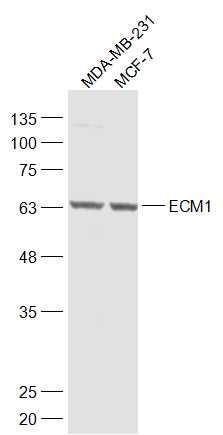
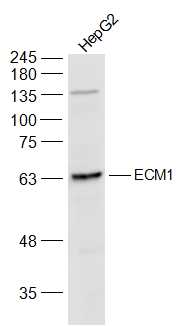
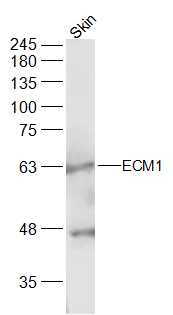
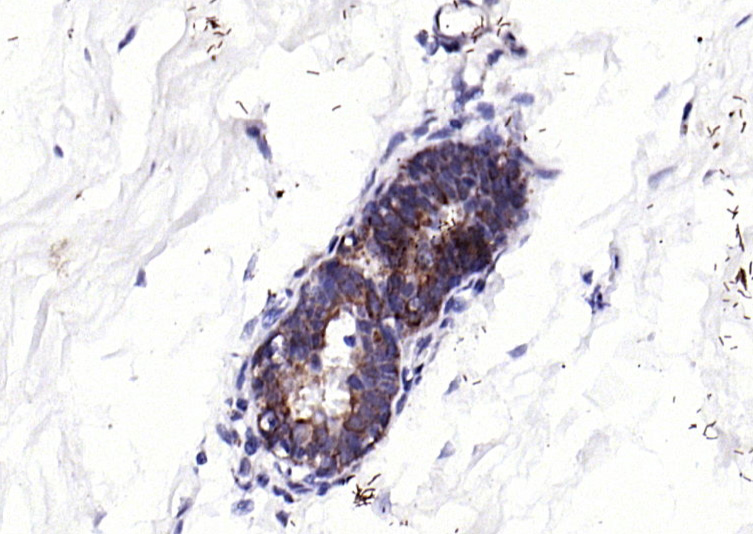
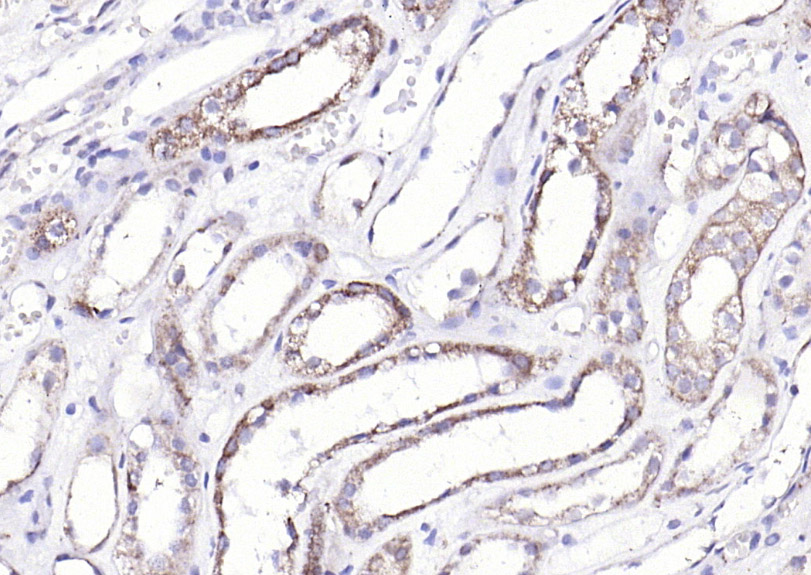
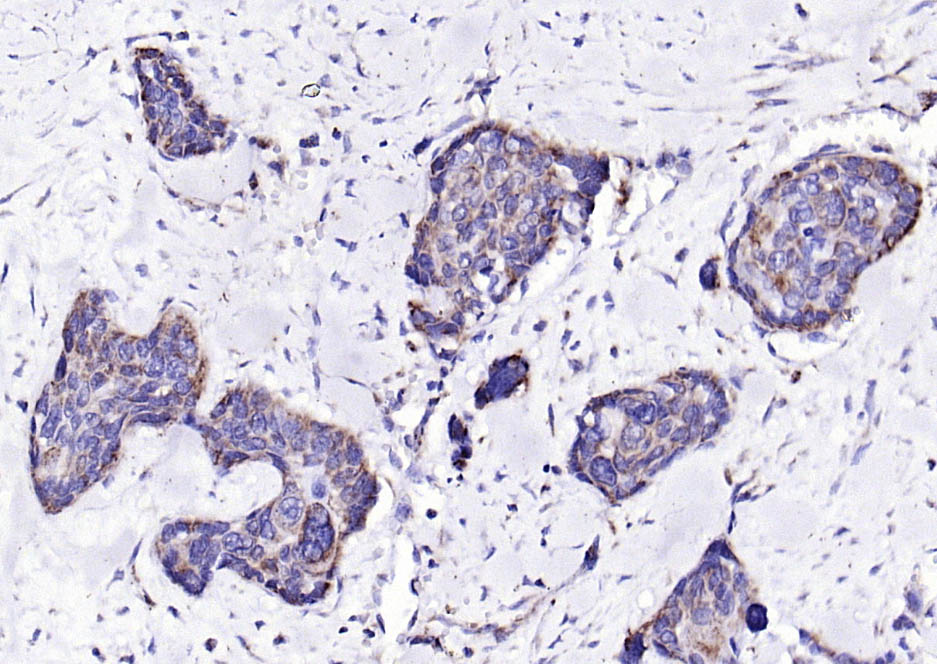
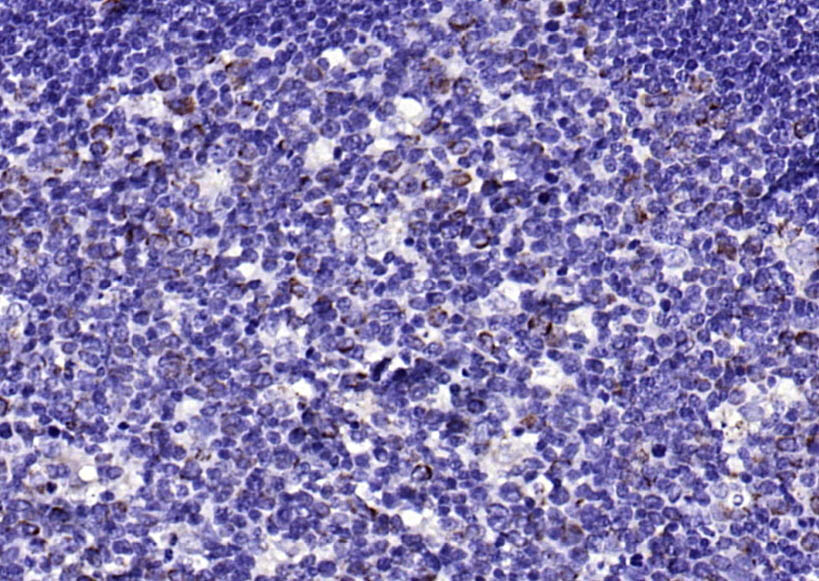
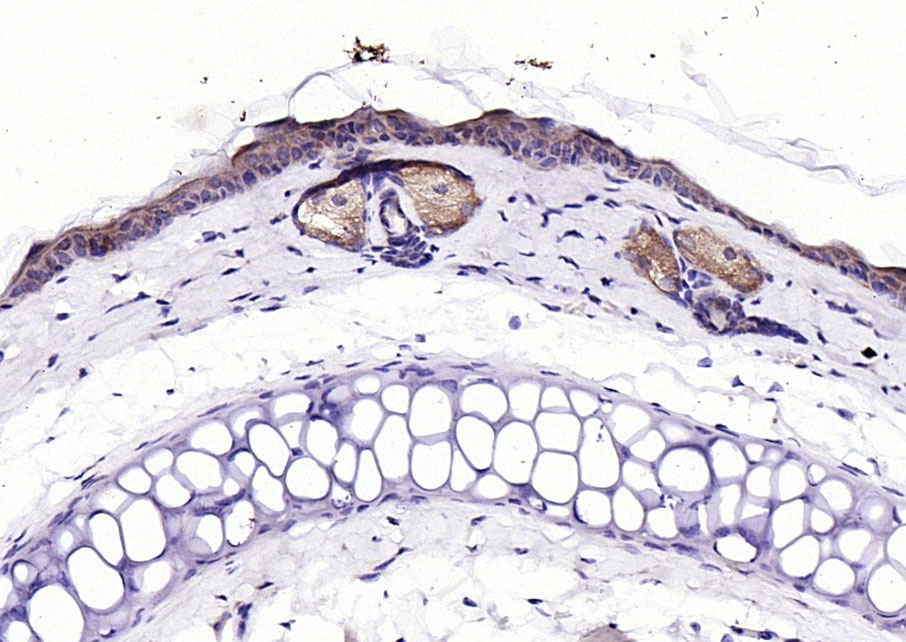
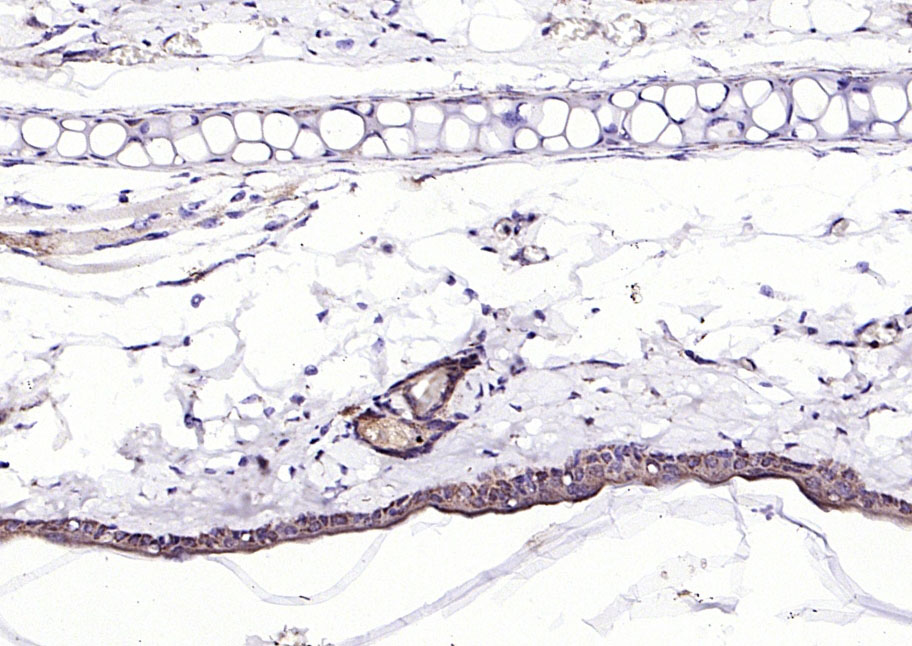
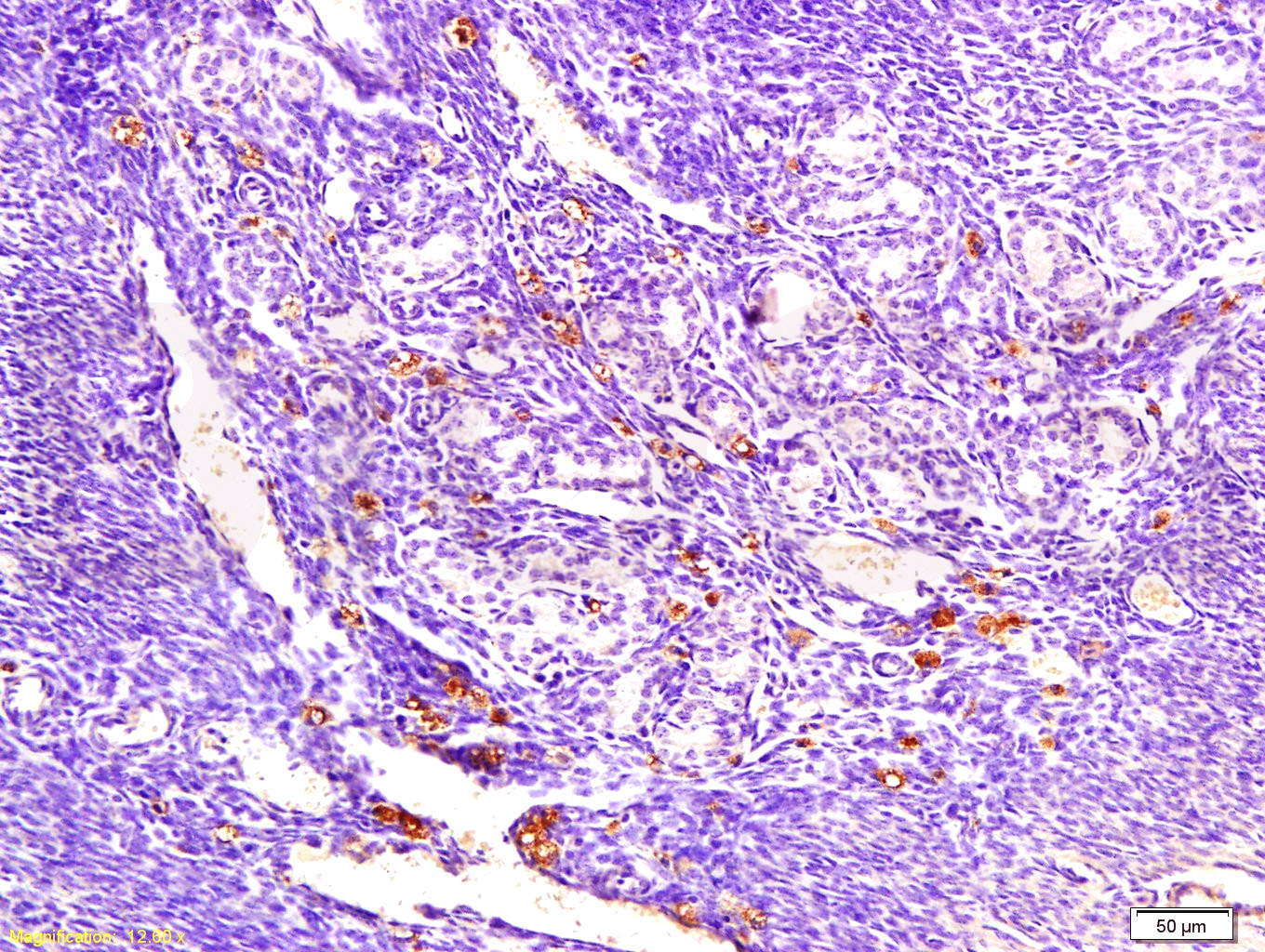


 +86 571 56623320
+86 571 56623320
 +86 18668110335
+86 18668110335

